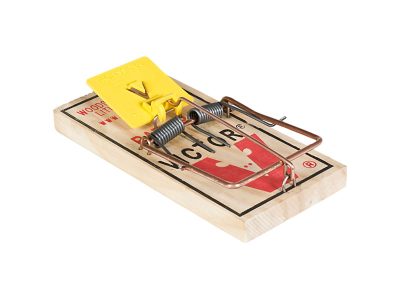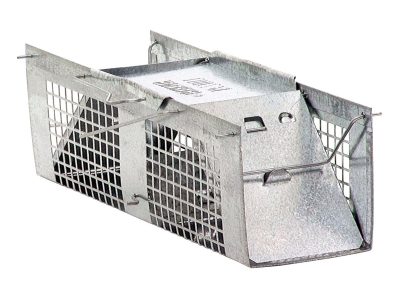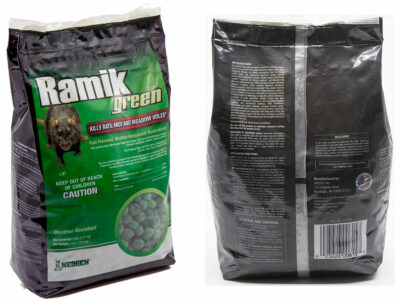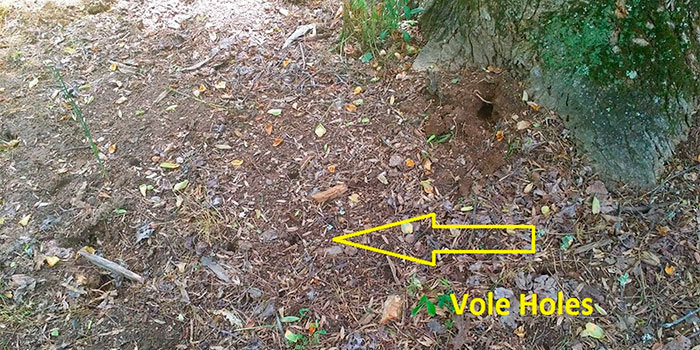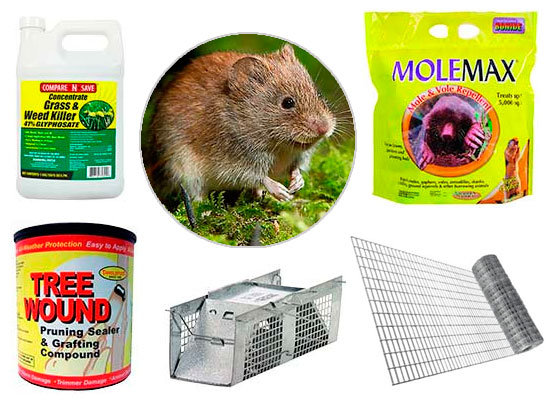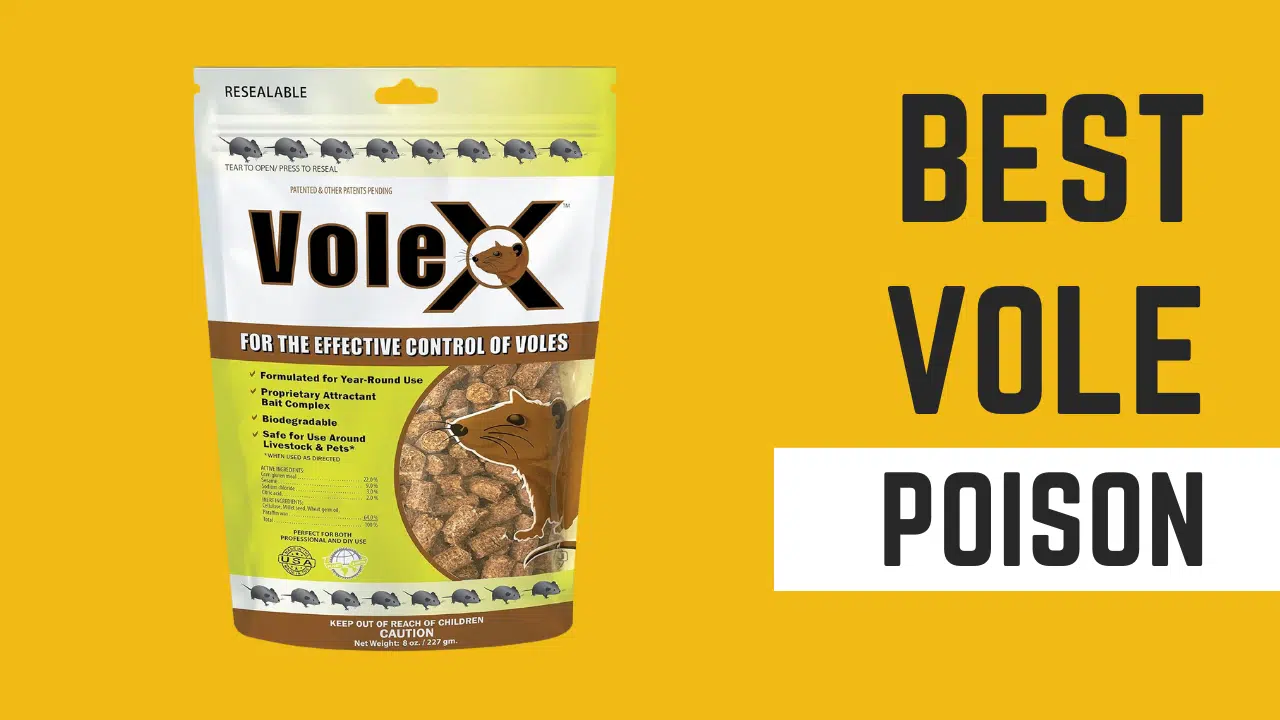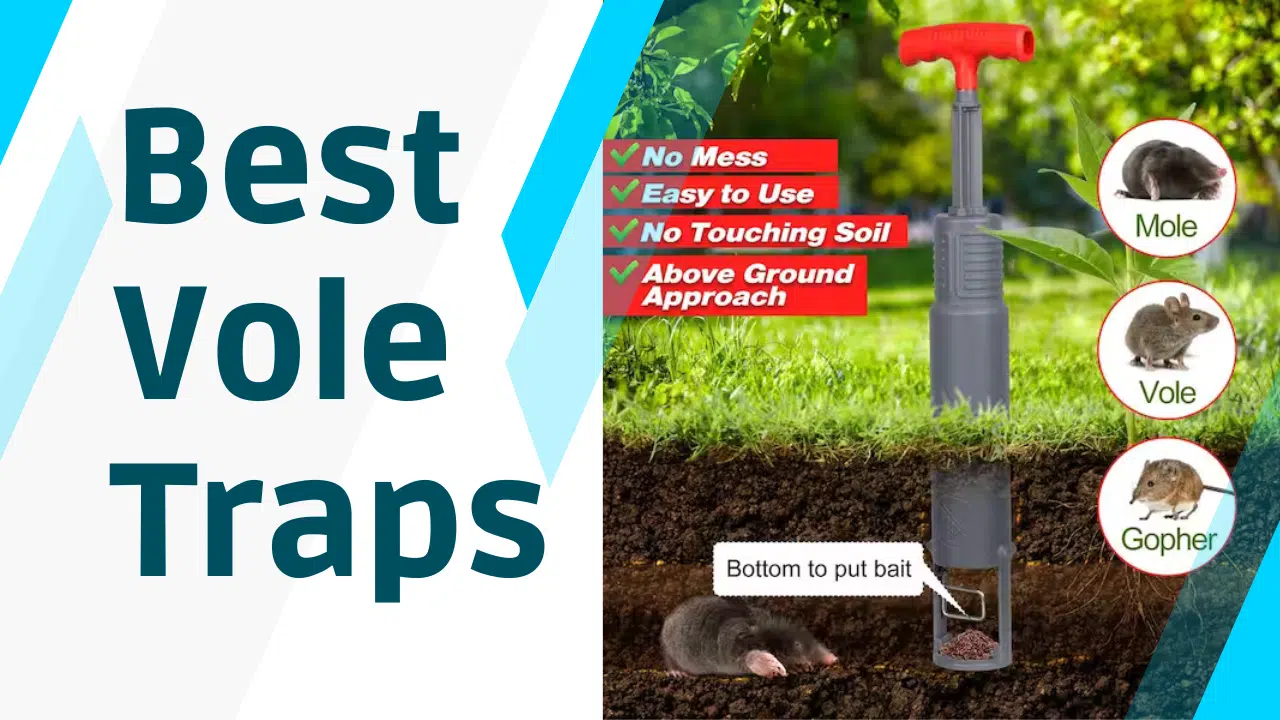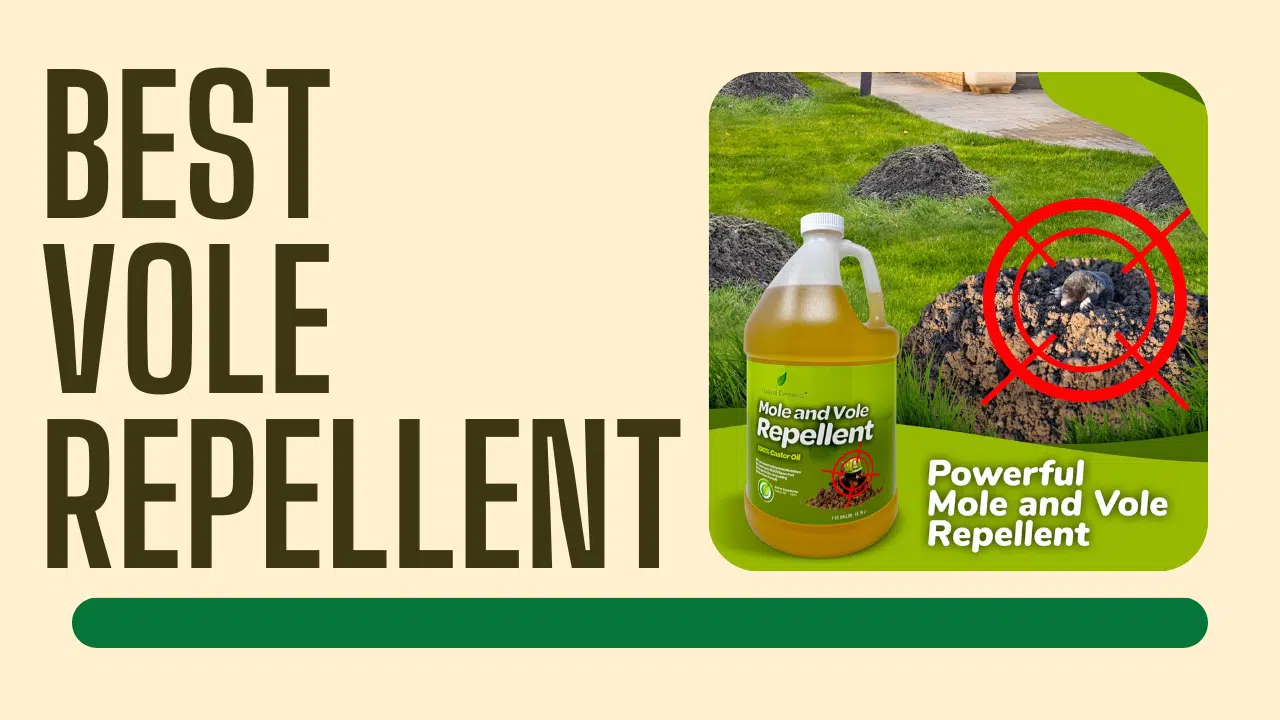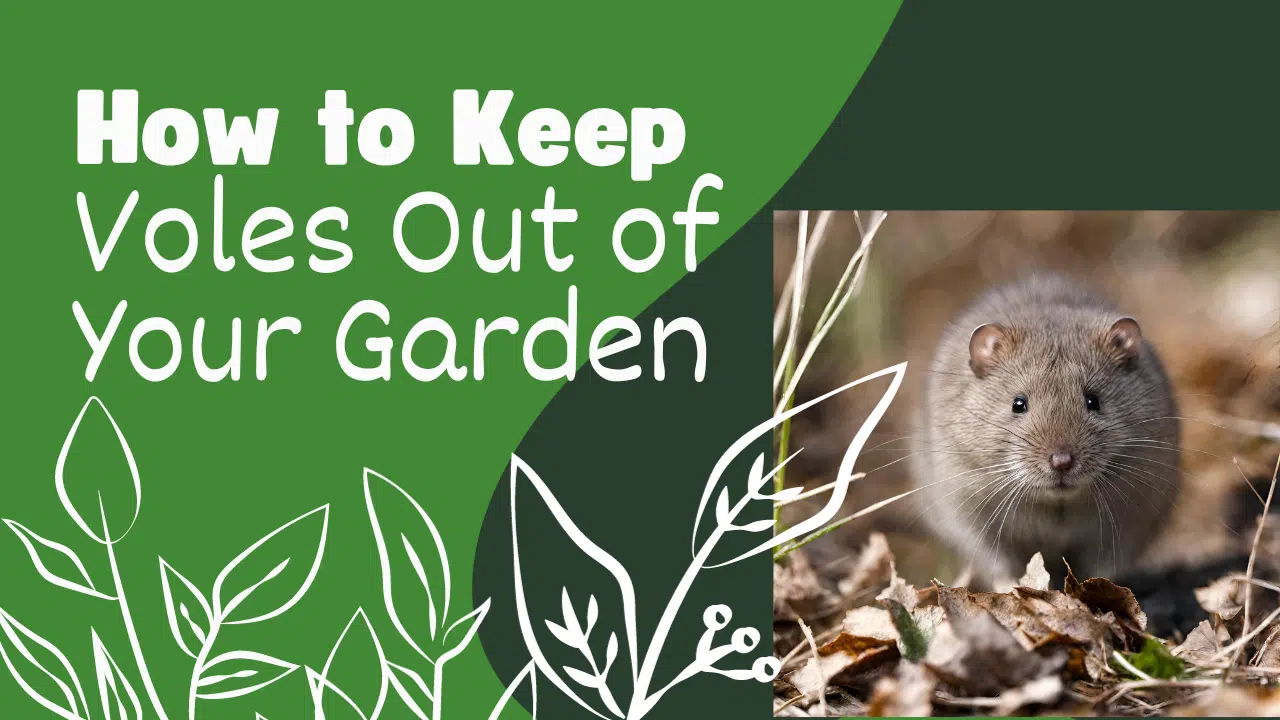
- LAST UPDATED: December 30, 2023
Are voles running amok in your yard and filling it with holes, tunnels, and dirt mounds? Or, perhaps, your voles are consuming more of your garden vegetables than you are, and you’re determined to put it to a stop.
Voles are just field mice, and although they can infest your garage and home as surely as a field, we will here be focusing on how to get rid of voles in your outdoor spaces.
Your yard provides a wonderfully well-suited habitat for voles, so it’s no surprise if they manage to find it and take up residence there. But there are effective ways of combating outdoor rodent infestations just as there are for indoor ones.
Read on to learn the best ways of ridding your lot of voles and of discouraging them from ever returning!
5 Steps Guide on How to Get Rid of Voles in Your Yard
Voles are small mammals that feed primarily on vegetation. They can be found in a variety of habitats, but are most common in marshy areas and thickets.
So voles are tunneling around in your yard and garden, blazing surface trails like “mouse pioneers,” and killing your plants and grass by nibbling on their root systems. What can be done about it?
The first step is to identify that the species you’re dealing with really are voles. They're often mistaken for mice or rats, but voles have longer bodies with shorter tails. Voles also have fur-lined cheek pouches that they use to carry food back to their nests.
Voles are smaller than most other mice, usually only growing to a few inches long (though they can reach nine.) Also, voles have shorter, furry tails, beady eyes, tiny ears, and relatively wide faces.
But you can identify voles by the presence of above and below ground tunnels if you can’t “get a good look at one.”
If you want to rid your yard of voles, the following 5 steps should help you get started:
STEP 1. Find out what is attracting them to your yard
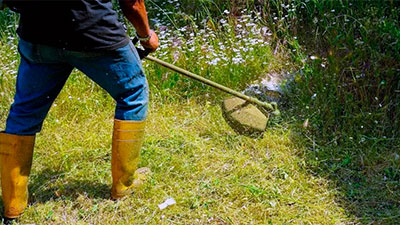
Once you figure out why they're coming into your yard, it's much easier to come up with a solution that will get rid of voles.
STEP 2. Remove their food sources
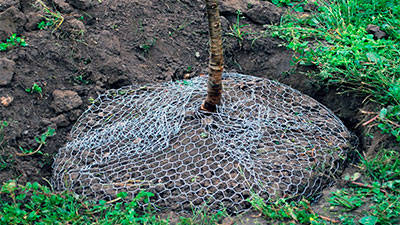
Next, protect your most valuable plants by enclosing them in steel mesh set a few inches into the ground.
Then, spray hot sauce (yes, hot sauce) on your precious plants to keep voles away from them above-ground.
STEP 3. Remove their nests
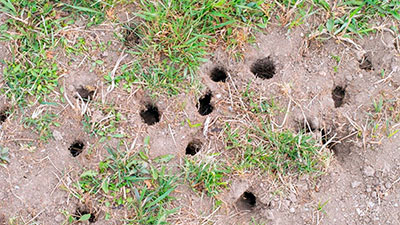
- Check the perimeter of your home where some tall grasses or shrubs could protect you from predators like cats and birds. If voles are present, then this is an ideal spot for them to nest or feed on seeds, bark chips, etc., while remaining hidden from view.
- Look for small piles of dirt, grass clippings, and leaves. Voles will often "throw" excess dirt from their nests as protection. The mounds or piles may be anywhere from an inch to 2 feet tall, depending on how close they are to the surface.
- Check beside your home; voles like to nest in cool, dark places. If you have a crawl space, basement, deck, porch, or shed near the ground level, it might be worth checking to see if they're nesting there instead of on your lawn.
- Check under wooden decks and porches not insulated from the soil with concrete footers or gravel pads. Voles also may nest under sheds that are used for storage.
- Look under the bark of fallen logs if you have any in your yard. Voles can also be found nesting in abandoned mole tunnels or digging through the roots of trees.
No matter where they've chosen to make their nests, make sure you get rid of them entirely before you set out to trap any voles. If you don't, they'll move to another spot on your lawn instead of leaving for good.
- Dig down until you've exposed their nests and runways. Then, remove them by flushing the area with water from a garden hose or sprinkler. You can also use mulch or soil that will suffocate the nests.
- In some cases, you may be able to fill rodent burrows with gravel or even a mixture of vinegar and water poured into the burrow hole. It will dry out their skin, which causes them to dehydrate and eventually die from lack of fluids within a few days.
- If they're living in the soil, you may be able to kill them by pouring boiling water into their burrows.
- You should also consider other predator control methods like cat and bird feeders and natural predators like snakes and owls.
Besides ruining your yard, voles also (like other rodents) carry diseases like salmonella and fleas or ticks that carry diseases like Lyme disease or Rocky Mountain Spotted Fever. Thus, your health, as well as your property, are at risk if you don't take steps to eliminate voles.
STEP 4. Set up traps
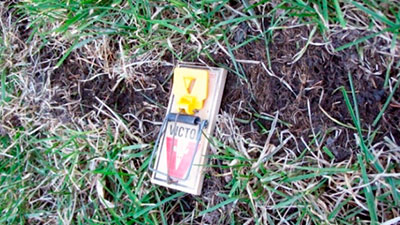
You can set mousetraps outside in the garden, along with your foundation, and on vole trails. But be sure they have covered traps so you, your kid, or your cat doesn’t trap a toe in them!
I'll take a look at the different types of traps available, as well as which bait you should use to lure them into the trap. The first step is setting up your traps and then placing them around your property where voles are likely to be looking for food. Be sure that any children, pets, or other animals are not near these traps - they can cause injury! Let's review each type of trap now.
Snap Traps
The simplest of the traps consists of a piece of wood with a metal bar designed to snap when an animal trips it. You'll need to place these strategically - you can't just set them out in your yard (unless there's no other way!) and expect them to work.
Choose areas with lots of vegetation, such as garden beds, to place the traps. Set them next to signs of vole activity - see below for more on what to look for.
You'll need to check these often, so you don't miss the voles when they get caught! Since there are no "sides" or trap doors, if a trapped animal is left in the trap too long, it can die and cause a terrible smell. Proper trapping is important here - make sure you learn how to set the traps upright when starting.
Cage Traps
A little more humane than snap traps, cage traps allow an animal to enter but not get back out again. These work best where vole activity is less apparent.
Traps like these should be set under low shrubs and over watery areas such as creeks or swamps. Since they can take a little practice to get the hang of, make sure you read the manufacturer's instructions before setting them out in your yard.
I advise checking these every few hours and also checking your local laws before using these. Many homeowners' associations don't allow any traps to be used in their yards, so it's best to check first.
Poison
Though poison is occasionally used as a way to kill voles, I don't recommend it because if the infestation is severe you'll attract other pests such as rats to your yard.
I also don't recommend using poison in your garden because it can kill off bees, which you may have seen early on as they pollinate flowers. Rats are likely to set up shop around any dead voles you leave out, so avoid this method of control if possible!
When trapping isn't good enough for you, try the tried and true method of poisoning the voles. Since voles are tunneling animals that tend to stick close to home, you may be able to poison them with little risk to any other animal.
Place some bait near their runway and see if they take it. If so, try again in a few days closer to their nest site (take note of where they’ve been traveling). If you're not having any luck, try placing the poison in a bait box to prevent other animals from getting access. Poison should be used with caution and is best left up to a professional.
Baiting for Voles
There are some different types of bait that voles will eat, but they most often eat vegetables and fruit, with roots being a favorite. So for this reason, my best advice is to try trapping them near your veggie garden! Many people have had success using apple cider vinegar, which can be poured around the perimeter of your yard since voles are attracted to it.
However, if you don't have any of this on hand, you can also try using dried apple slices or any other fruit to use as bait, but be sure it's a type that voles will eat. You may have to experiment with different baits until you find the one your vole population likes best!
STEP 5. Use repellents
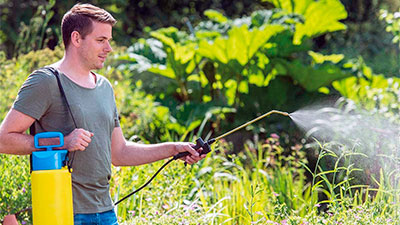
You should keep in mind that if you're using an essential oil-based repellent, some of your plants may die. The same thing happens with commercial repellents, even if they are organic. The good thing is that once the voles leave your yard, you can remove the repellent product and plant replacement will be easy.
If you want to use an all-natural repellent, here's what you should do:
- 1. Mix water, soap, cinnamon, cloves, peppermint oil, and castor oil.
- 2. Spray this liquid around your yard in the places where voles are commonly found. Shake well before use.
- 3. If you're not satisfied with the repellent's strength, add more of any ingredient until you get the desired result. You can also experiment on your own to find out what gives you the best result.
- 4. Put brambles and rose shrubs near your garden - voles don't like thorns and prickles.
- 5. As a last resort, you can use electronic repellents designed to keep animals away from your yard. However, be sure that the devices are well hidden so that you don't scare away the ones who are beneficial to your garden.
You can also make a homemade repellent using peppermint oil, which voles dislike. You will need:
- 10 drops of peppermint oil
- A cup of water
Directions: Mix ingredients in a spray bottle or any container that has a spout. Shake well before use. Spray on plants or any area of your yard where voles are active.
- Repel Voles with Coffee Grounds
Take advantage of the repellent properties of coffee grounds by sprinkling some around the areas where you've spotted voles or their burrows. You can also put them in traps to lure the critters away. Voles don't like the strong smell of coffee grounds because it reminds them of their predators, such as coyotes, foxes, and bobcats. - Use Vole Repellent Animals or Insects Prefer
Voles are repelled by animals and insects that are their predators, such as snakes, skunks, cats, and dogs. So, you can put such animals in your garden, and they will keep voles away naturally. Even if you don't like to use such methods, one of these predators may take care of the entire vole infestation without your participation.
- Voles Repellent Recipe with Hot Pepper
Mix garlic powder, cayenne pepper, and paprika in a 1/2 cup of hot sauce and mix well. Transfer the solution into a spray bottle and spray it around your garden. Two applications per week should make voles look for other places to live because they don't like the strong odor of these spices. - Use Castor Oil to Get Rid of Voles
Take advantage of voles' dislike for castor oil by mixing 1/2 cup of castor oil with 1 gallon of water. Mix well. Then, spray this mixture on your plants and garden areas every 2 weeks to drive the voles away.
Get Rid of Voles Naturally with Plants
There are certain plants that voles avoid because they either smell or taste bad to them. You can use the following plants in your garden:
- Garlic
- Onion
- Parsley
- Peppermint
- Thyme
Removing Voles From Your Front/Back Yard
It won’t be hard to figure out voles have invaded your front or back yard: dead vegetation, pushed-up soil, and little pathways meandering through your grass will give it away.
But you then have to find the voles if you want to exterminate or remove them. Follow the trails and they’ll be led to entrances to the underground tunnels. Right in the doorway is where you want to set a trap.
In fact, it’s good if you put two traps end to end, so you can get them coming or going!
Then you’ll just need to check your traps daily, and if you don’t catch any voles after 3 days, you should find another tunnel door to place them in. And if all else fails, you can call in a professional vole exterminator.
Aside from that, take care to follow the 4-step simple starter plan mentioned in the section just above!
Ridding Your Lawn of Vole Infestations
Traps are generally the best DIY method of getting rid of voles in your lawn, but you have to be very careful to position the traps correctly. If you do and you secure them so they don’t blow away in the wind or wash away in the rain.
That means putting the traps on “runways” used by the mice and setting them with the trigger in the mouse’s path of approach. You don’t actually have to bait the traps if they are set correctly in the vole hole, but a little PB, cream cheese, or other favorite rodent food certainly won’t hurt!
In the wild (your backyard), voles eat roots, insects, seeds, snails, and slugs. But they are constantly foraging day and night and will eat almost anything any other mouse would eat, so no need for “special baits” for voles.
Eliminating Voles in Your Vegetable Garden
Your garden is full of roots, bulbs, insects, slugs, and more. That makes it prime territory for voles who may be lurking about in the vicinity.
Even small mice like voles can climb and jump surprisingly high, and these particular mice can tunnel as well, remember. But nonetheless, protecting plants and garden beds with tight-knit wire mesh will discourage voles from getting at your garden plants.
And again, hot sauce on the plants tends to repel them and keep them from targeting such “spicy vegetation.” Voles (like people) also hate castor oil, so you might try that as well.
Finally, eliminate all weeds and mulch and try to create as much open space between plants and garden sections as possible. Voles don’t even like to dart across a foot-wide open spot if they can help it, and given the fondness of local hawks for vole flesh, who can blame them?
These techniques, plus well-set traps, will help end a garden vole infestation. But for information on how to keep voles out of your garden to begin with, follow the provided link!
How to Get Rid of Voles in the Flower Beds
Getting rid of voles in the flower bed works about the same way as ridding your garden of voles.
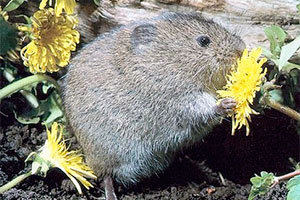
- Dig a 12-inch deep trench all around the flower area. Voles will retreat rather than try to cross it. But make it narrow so you can just step right over it yourself.
- Install a vole fence. It should go three to six inches under the soil and four to 12 inches above the ground. Use quarter inche metal mesh that will not rust (aluminum).
- Let your cat out all day long, weather permitting. A cat constantly lurking around the flower bed can frighten voles away.
Getting Rid of Voles in the Grass
Voles love grass, but grass doesn’t necessarily love voles. 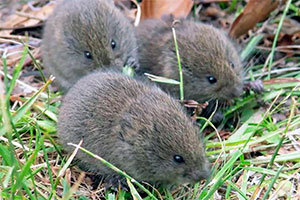
If you see patches of dead grass, that’s the place to look for vole runways and entries to burrows and tunnels so you know where to set your traps.
Also, be sure to cut your grass as short as possible to deny voles the cover they need.
Voles Are Under My Deck. Now What?
What if you’ve spotted voles going under your deck or see voles paths/tunnels leading to the deck and stopping there? If your deck has a surrounding wall, it can be difficult to access areas below your decking where voles may be breeding and threatening to find a way into your house.
First, you can lay down traps near the deck’s edge or slip them just underneath. Otherwise, you may have to take down a section of the decking wall or take up a few deck boards.
While you have access, remove all rubbish, leaves, and clutter. Dig around till you eliminate vole refuges and scatter any voles currently present. Then run quarter-inch mesh chicken wire along the edge of your deck to keep the voles out.
Choosing the Right Vole Extermination Method
Many people immediately think of the best vole poison when they want to get rid of voles, but that’s not usually a good idea. Poison could end up affecting your cat or dog – or the neighbors. And it can kill harmless wildlife too, besides possibly being a hazard to small children playing in the yard.
Also, the dead carcasses left behind by poisoned bait could be eaten by cats or hawks and hurt them. Or, it could just sit around hidden in your grass and rot, spreading disease.
What should you do then?
Your major vole extermination and removal methods are as follows:
- Covered traps at vole-hole entrances. Use peanut butter to ensure your rodents can resist. But it’s hard to catch a whole group of voles with traps set in one location, so this method has its limits.
- Use vole repellents as soon as you notice the infestation. And plug up all the vole holes. This is a hit-and-miss method, but it’s worth a shot at least. Further details can be found here.
- Introduce a cat into your vole infested area. Cats, and the mere smell of cat, can often drive voles away.
- Use a catch and release trap that holds numerous mice at once. A trap door style contraption that lets voles in but not out can be placed by a vole hole.
- Contact a vole exterminator. Voles are difficult to remove, and you might end up having to call in the professionals.
If you want to know how to get rid of voles naturally, click on the link for more information.
Vole Removal Services
If you can’t get rid of your voles any other way, you may have to contact a vole removal service. Licensed vole removal professionals can use vole poisons that are safe (when used by an experienced exterminator) and that are not available in local hardware stores.
Due to the amazingly fast reproduction rates of voles, you can quickly get an infestation involving hundreds, and ultimately, thousands of voles. That may be too much to handle on your own.
It can easily cost over $500 for an initial inspection of your lot for vole life and follow-up extermination and vole removal services. It might only cost you $50 to $100 using DIY methods. But when you can’t manage to do it on your own and the vole population is soaring, it can be worth it to pay the additional cost.
Also, note that it’s not uncommon for two or more neighbors suffering from the same vole problem to agree to split the costs of professional vole removal.
In small numbers, voles might not be much of a concern to you. But when they kill your grass, plants, flowers, and garden vegetables and riddle your yard with holes, that’s a different story.
Most vole removal and extermination techniques can be done by a dedicated amateur willing to learn a few “new tricks, ” so it makes sense to tackle your vole problem on your own to try to save money. But if it becomes obvious you can’t stop it, there’s no shame in calling in the pros to finish the job.
Contents
- 1 5 Steps Guide on How to Get Rid of Voles in Your Yard
- 1.1 STEP 1. Find out what is attracting them to your yard
- 1.2 STEP 2. Remove their food sources
- 1.3 STEP 3. Remove their nests
- 1.4 STEP 4. Set up traps
- 1.5 STEP 5. Use repellents
- 1.6 Removing Voles From Your Front/Back Yard
- 1.7 Ridding Your Lawn of Vole Infestations
- 1.8 Eliminating Voles in Your Vegetable Garden
- 2 How to Get Rid of Voles in the Flower Beds
- 3 Choosing the Right Vole Extermination Method
- 4 Vole Removal Services

